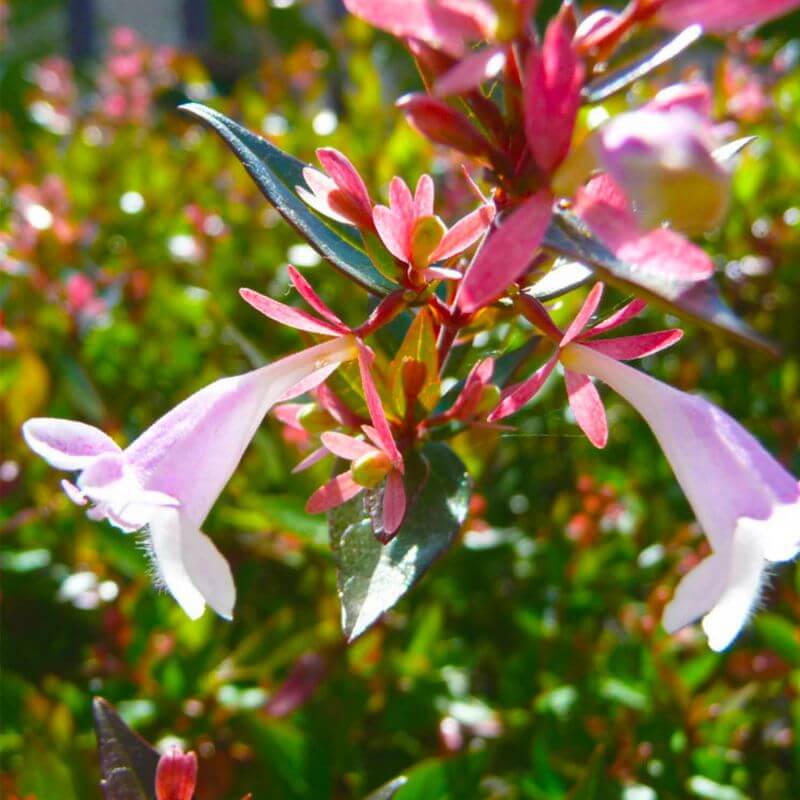
Haie Abélia vente plantes pour haie Lot de 10 arbustes Pépinières Naudet
L a famille des Abélias (Abelia chinensis) compte dans ses rangs une trentaine d'espèces d'arbustes de taille moyenne, au feuillage semi-persistant, tous originaires de Chine.Le plus cultivé et l'un des plus florifères est l'Abélia à grandes fleurs (Abelia grandiflora) Le puissant parfum que dégagent ses fleurs roses attirent au jardin les insectes butineurs et contribuent donc.
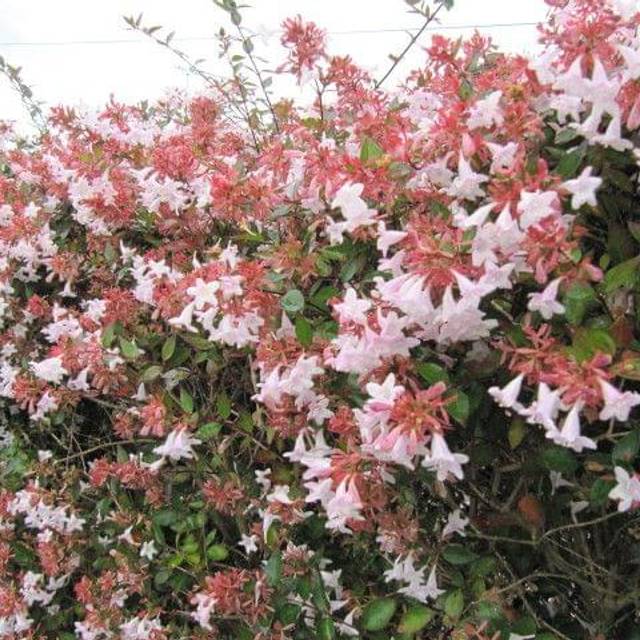
Abelia grandiflora haie
Edward Goucher. Growing Zones: 6 to 9. Plant Height: 3 to 5' Flower Color: Lilac-pink. Leaf Color: Dark green tinged with bronze. Introduced in 1911 by Edward Goucher of the US Department of Agriculture, Edward Goucher abelia is a compact shrub with lavender flowers with orange speckles on the throat.
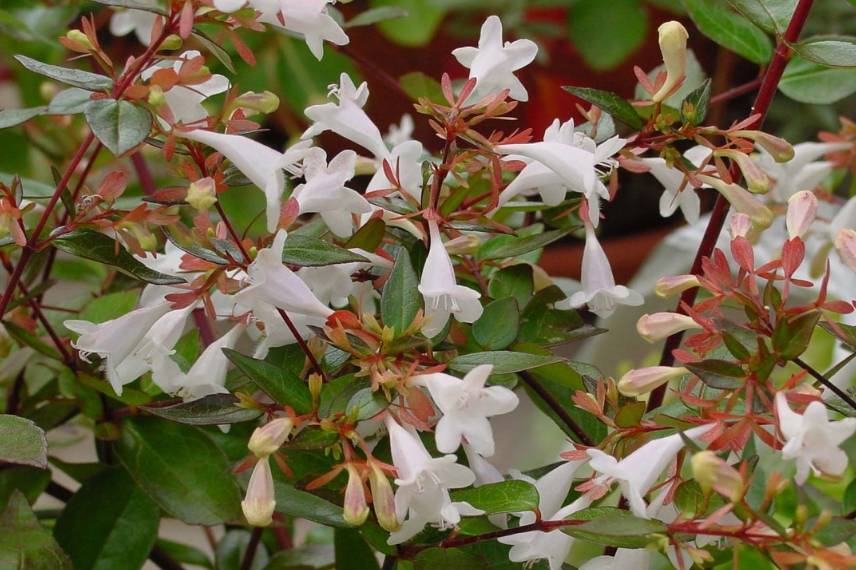
10 arbustes pour haie mellifère, pour les abeilles Promesse de Fleurs
Evergreen to semi-evergreen. Water when top 2 inches of soil is dry. Glossy Abelia is a cherished performer in the mixed shrub border because of its long season of blooms from June to October. Use it for hedging, to separate garden areas, as a screen or along a foundation. Pretty in front of large, dark evergreens.
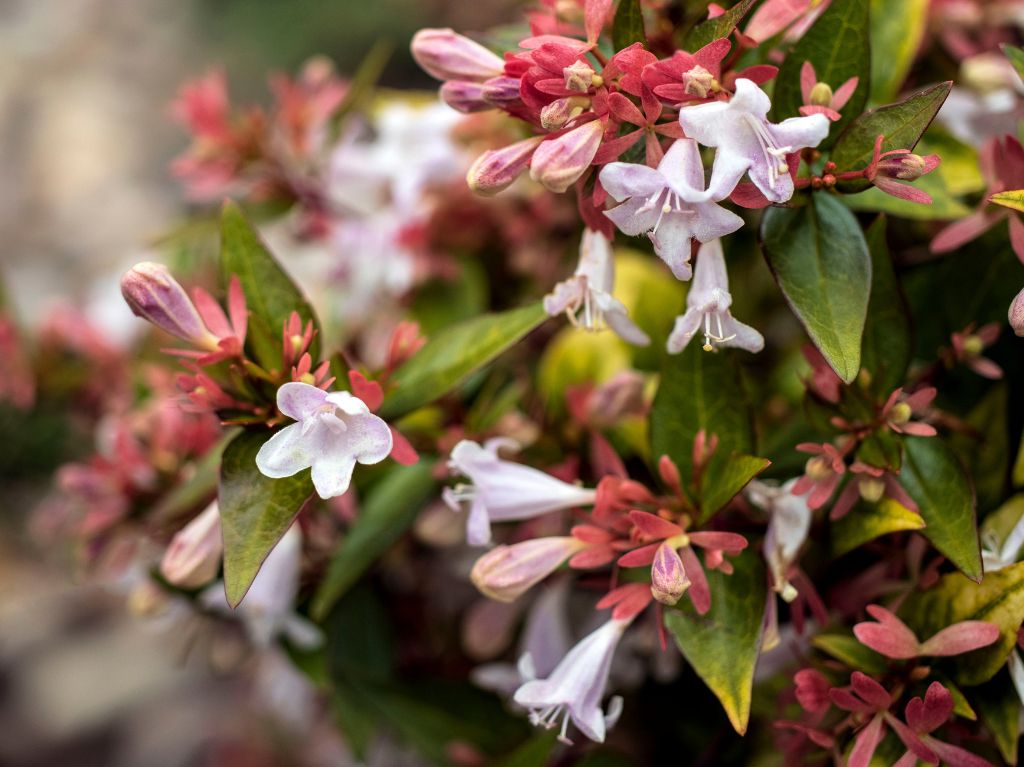
Pourquoi planter un Abelia Grandiflora dans votre jardin
3. Buy Plants. Abelia × grandiflora (Glossy Abelia) is a medium-sized, rounded, semi-evergreen shrub with gracefully arching branches, densely clothed with small glossy oval, dark green leaves and clusters of pink-tinged, white, bell-shaped flowers. Slightly fragrant, the blooms are produced continuously cover a long period extending from late.

Abelia grandiflora pour haie Vente en ligne
Abélia en pot : La culture de l' abélia en pot est possible mais il faut prévoir un rempotage tous les 2 à 3 ans et une taille régulière pour contenir la croissance. Il a besoin d'un terreau spécial arbuste. Eviter les endroit trop brûlants en été. Un arrosage régulier est recommandé tout au long de sa croissance, ainsi qu'un.

Abelia x grandiflora Pot de 5 litres, hauteur 40/60 cm Gamm Vert
Abelia X Grandiflora is a hybrid cross between Abelia Chinensis and Abelia Uniflora. First developed in Italy, this plant has an active growth period in the summer and the spring. The plant leaves are dark green, and its flowers are of pinkish-white color. This shrub may reach up to 7 feet in height and possess arching and spreading stems.
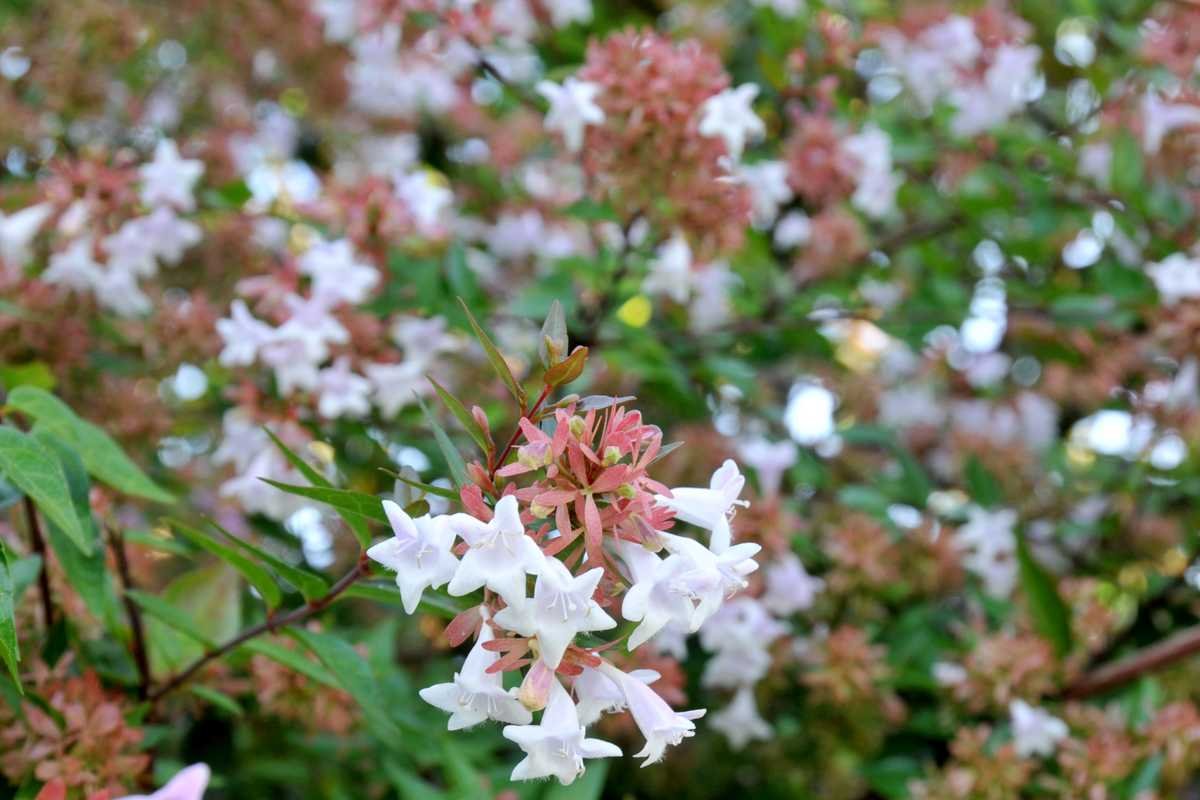
Abelia grandiflora, Abélia à grandes fleurs Plantation, Entretien
Abelia looks best when allowed to retain its natural shape and size. Since glossy abelia () blooms on new wood, prune in late winter to early spring before new growth emerges so that flowers are not sacrificed. Remove any dead or damaged branches, and thin as needed to encourage new shoots. Lightly prune to shape.

Abelia Grandiflora Para Mi Jardín
Abelia × grandiflora is a cross between A. chinensis and A. uniflora. It is a rounded, spreading, multi-stemmed shrub in the honeysuckle family. Typically grows on gracefully arching branches to 2-4' tall in the St. Louis area, but usually taller (to 6' tall ) in the warm winter climates of the South (USDA Zones 8-9).

Abelia x grandiflora
Contraintes sols riches en humus et humides, drainant et frais.température mini - 20°chistoire et usage l'abelia grandiflora se plante en haie libre ou taillée, mais aussi en isolé ou en pot.hauteur adulte 1 à 3 mexpositionensoleillée à mi ombre. 6,93 € 9,90 €. Voir plus Exclu web.
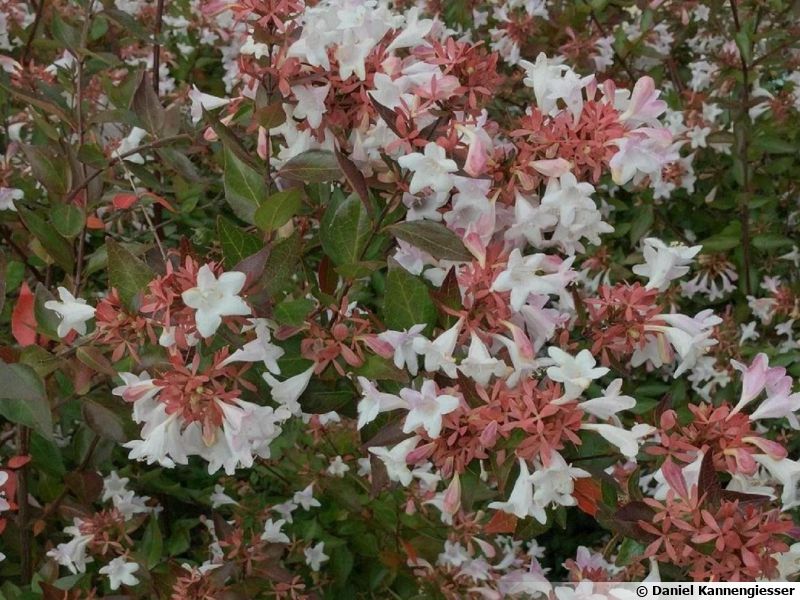
Abélie à grandes fleurs, Abelia x grandiflora planter, cultiver, multiplier
L'abélia est un arbuste intéressant pour sa floraison mais également pour son feuillage luisant décoratif. Les fleurs des abélias, abondantes de juin à octobre, parfument et adoucissent le jardin de leurs teintes claires blanches et rosées. Plantez cet arbuste aussi bien en isolé sur une pelouse qu'en haie ou en massif. Il demande peu d'entretien, ne craint pas les nuisibles et.

Vente en ligne LOT de 100 Abelia grandiflora Haie en kit économique à floraison estivale pour
Glossy abelia is a fine-textured, semi-evergreen, sprawling shrub with 1½ inch-long, red-tinged leaves arranged along thin, arching, multiple stems. It is a hybrid between A. chinensis and A. uniflora. It stands out from other plants because the leaves retain the reddish foliage all summer long, whereas many plants with reddish leaves lose.

Haie de 15 arbustes persistants (fermeture visuelle toute l'année)
Choose a sunny location in your garden. Scatter the seeds on rich, moist, and well-draining soil in the spring when the threat of frost is gone. It may be best to amend the soil with compost before planting, depending on your soil. Keep the soil moist, watering regularly. Germination should occur in a few weeks.

Abelia grandiflora Jardin Plante haie, Arbustes à fleurs et Arbuste haie
This is the classic clone, usually sold simply as Abelia × grandiflora. Image John Grimshaw. A semi-evergreen shrub to 2 m with arching stems. Shoots usually with dense reddish pubescence. Leaves 2.5-4.5 cm long, ovate, base cuneate and apex acute, glossy green above and sometimes bronzed, glabrous or with tufts of hair under the vein-axils.

HAIE ABELIA KIT de 10 mètres
Abelia chinensis: An abelia that flowers in a big, beautiful showing, often used as a garden centerpiece or in a big container.It grows five to seven feet tall and wide. Its flowers are white and tinted with pink. Abelia x grandiflora: The glossy abelia is another widespread plant, perhaps the most popular in the South.It grows to eight feet tall and five feet wide with white or pink flowers.

Abelia grandiflora Plantasvillor
En pleine terre. Un espacement de 1 à 1,50 m entre deux abélias, selon les variétés, permet de laisser la ramure se développer et d'avoir moins de travail de taille. Paillez le sol après la plantation. En pot. Choisissez un terreau de bonne qualité et un contenant de grande taille.

Closeup D'une Haie D'abelia Grandiflora Edward Goucher Photo stock Image du été, fleuraison
Abelia chinensis. Abelia / əˈbiːliə / [1] is a previously recognized genus that contained about 30 species and hybrids, placed in the honeysuckle family, Caprifoliaceae. Molecular phylogenetic studies showed that the genus was not monophyletic, and in 2013, Maarten Christenhusz proposed the merger of Abelia (excluding section Zabelia) into.